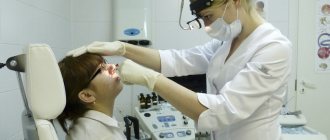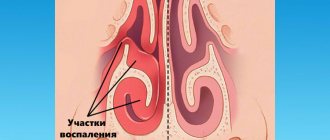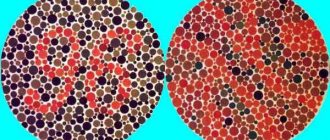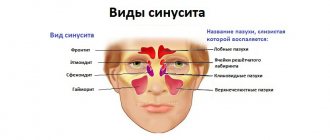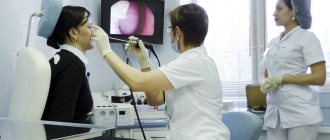Published: 10/06/2021 13:40:00 Updated: 10/06/2021
Rhinitis is an inflammation of the upper respiratory tract, namely the mucous membrane of the nasal cavity. The pathology is accompanied by impaired nasal breathing, nasal discharge and congestion, weakening or loss of smell, itching in the nose, sneezing, watery eyes and sore throat. Rhinitis can be an independent disease or a symptom of another disorder.
Most people consider rhinitis to be a common runny nose and do not attach much importance to it. However, its symptoms may warn of serious health problems and complications if not properly treated. Therefore, it is recommended to consult a doctor if rhinitis does not go away after a few days or if it worsens.
Are rhinitis and runny nose the same thing?
Rhinitis is a syndrome that occurs when inflammation of the nasal mucosa develops. Inflammation leads to swelling of the mucous membrane, which is manifested by increased secretion of fluid in the nasal passages and difficulty in nasal breathing. Thus, a runny nose is only one of the manifestations of rhinitis. In this case, rhinitis can occur without a runny nose at all - for example, only with swelling, difficulty breathing and even a decrease in the sense of smell (Fig. 1).
Figure 1. Common symptoms of rhinitis. Source: Shutterstock/Fotodom
Classification of rhinitis
Rhinitis can be acute or chronic.
In acute form, rhinitis occurs when the body is damaged by viruses or bacteria. This course of the disease is the most common. It is usually accompanied by a set of “cold” symptoms:
- headache,
- general malaise,
- a sore throat.
Chronic rhinitis occurs if it was not cured in the acute phase, or if it appeared for reasons that are not related to infection.
Types of chronic rhinitis
Rhinitis can have a different character depending on what caused it.
Vasomotor rhinitis
It develops due to a disturbance in the reactivity of the nasal mucosa, when in response to a seemingly “ordinary” irritant - cold air, smell - the mucous membrane reacts too strongly. In this case, the discharge from the nasopharynx is abundant, the nose is very stuffy, nasal breathing is difficult or absent. The condition worsens paroxysmally.
Allergic rhinitis
Occurs as a manifestation of an allergic reaction. It can develop through contact with animal hair or skin particles, pollen, or inhalation of dust (Fig. 2). If the patient suffers from hay fever (hay fever), such rhinitis may be seasonal and coincide with the flowering period of the allergen plant. With a severe allergic reaction, irritation can affect the mucous membranes of the eyes and mouth. In other cases, the reaction manifests itself paroxysmally, immediately after contact with the allergen, and has no seasonality.
Figure 2. Rhinitis is just one of the conditions that accompany allergies to pollen, wool, tobacco smoke or dust. It is characterized by a burning or itching sensation, a tickling sensation, constant sneezing, and a runny nose (liquid, clear discharge). From time to time the nose may become stuffy. This rhinitis can be combined with other conditions (urticaria, shortness of breath, bronchial asthma). Source: CC0 Public Domain
Drug-induced rhinitis
Occurs when permissible dosages are exceeded or local vasoconstrictor or hormonal drugs are used for too long to treat a runny nose. In response to excessive use of drugs, the nasal mucosa becomes thinner (atrophy develops), and the number of nerve endings in it decreases. This provokes a disruption in the reaction of receptors to endogenous norepinephrine, and “dependence” on vasoconstrictor drops develops. To relieve constant swelling of the mucous membrane, you need to increase their dosage. This can lead to additional symptoms: bleeding of the mucous membrane, burning sensation and dryness. The protective functions of the nose are weakened.
Traumatic rhinitis
Develops after mechanical (physical, chemical) damage to the nose, accompanied by exposure to a traumatic factor on the mucous membrane of the nasal cavity. Traumatic rhinitis can result from contact of the mucous membrane with a sharp or large object or a burn (thermal or chemical, after inhalation of smoke, chemical vapors, dust).
Neurovegetative rhinitis
Associated with improper functioning of the autonomic nervous or endocrine systems. The walls of blood vessels do not react correctly to irritants, they expand even with minimal irritation, because of this the mucous membrane increases in volume and the nose becomes blocked. The volume of discharge is small. A characteristic feature of such rhinitis is the absence of pronounced or lasting relief after the use of vasoconstrictor aerosols or drops.
Hypertrophic rhinitis
It develops if the mucous membrane remains inflamed for a long time and its thickness increases. Inflammation can spread to deeper tissues, including the periosteum and bone. With such rhinitis, the nose is often or constantly blocked, and because of this, a person ceases to distinguish odors. The amount of discharge is small, and there is not always a runny nose. Edema may appear on only one side.
Catarrhal rhinitis
Develops as a complication of untreated acute rhinitis. The nose is stuffy, swelling of the mucous membrane appears, and the discharge is thick. A person can hardly distinguish smells. The condition worsens periodically if immunity decreases, hypothermia occurs, and chronic fatigue occurs;
Atrophic rhinitis
With such rhinitis, the mucous membrane, on the contrary, becomes thinner. Because of this, a person ceases to distinguish odors and suffers from dry nose. With such rhinitis, the nasal cavity may increase (due to a decrease in the volume of the mucous membrane). Its internal surface is covered either with thick secretions with an unpleasant odor, or with dry crusts.
What can the color of the discharge indicate?
Let's start with what is considered the norm. Moderately liquid and clear discharge is safe and is a sign of well-being and the absence of respiratory infections.
As we have already found out, when exposed to irritating negative factors, mucus production increases significantly. In any case, parents should pay attention to the color of nasal discharge, which can indicate the state of the immune system or the presence of hidden problems. For example:
- Watery discharge for several days indicates an allergic reaction. The allergen should be identified and its exposure should be completely eliminated.
- Viscous and cloudy discharge indicates the onset of ARVI. As we mentioned above, this is the second stage of a runny nose and a very definite signal given by the immune system.
- Yellow and green color of mucus indicates a bacterial infection and that the immune system is successfully fighting it. This is the color of dead cells.
- Sprinkles of blood in the mucus indicate microtrauma to the nasal mucosa, for example due to frequent blowing of the child’s nose or abuse of vasoconstrictor drugs.
- The brown color of nasal mucus does not carry any threat or hidden danger, and indicates an admixture of dust that is contained in the inhaled air and settles in the nose.
Parents should tell the doctor about their observations regarding the characteristics of the child’s nasal secretions. This will help complete the clinical picture of the disease.
Symptoms
The following symptoms are characteristic of rhinitis:
- difficulty in nasal breathing due to swelling of the mucous membrane: breathing through the nose is difficult or impossible, since air passes through the nasal passages worse;
- unpleasant sensations in the nose: dryness, soreness or burning, itching;
- sneezing (may be frequent due to irritation of the mucous membrane);
- runny nose - the appearance of thin or thick discharge. They can be transparent, white, green, with or without an unpleasant odor;
- decreased sense of smell or its complete loss (may be restored periodically);
- headache (often appears in the bridge of the nose, in the lower part of the forehead);
- congestion in the ears.
In the acute form of rhinitis, symptoms quickly increase and complement the course of the underlying infectious disease. General malaise is accompanied by an increase in temperature. There may be a headache and possible body aches. Mucous discharge flows from the nose, sneezing, lacrimation, and swelling are possible. Breathing becomes difficult, the head seems “heavy”.
If rhinitis becomes a chronic hypertrophic form, the nasal mucosa thickens, causing the nose to become constantly stuffy. A person is less able to distinguish odors, and thick mucous discharge periodically appears.
If attacks of rhinitis occur for no apparent reason and are accompanied by frequent sneezing, nasal congestion, lacrimation and watery discharge, vasomotor or neurovegetative forms of rhinitis should be suspected.
If rhinitis appears at the same time of year, there is a high probability that it is caused by allergies. Symptoms of rhinitis in this case include: difficulty in nasal breathing, itching, copious discharge. If allergic rhinitis is not associated with flowering plants, it manifests itself in strong, severe attacks with copious discharge, sneezing, lacrimation, and nasal congestion.
Kinds
The classification of I. B. Soldatov (1990) is used. According to it, the following types of chronic rhinitis are distinguished:
- catarrhal - manifested by intermittent or mild swelling, redness of the mucous membrane, chronic runny nose; when a decongestant is applied to the mucous membrane, the swelling disappears;
- hypertrophic – can be limited or diffuse, associated with thickening of the mucosa and narrowing of the lumen of the nasal passages; decongestant test is often negative;
- atrophic - can also be limited or diffuse, associated with thinning of the mucous membrane, the disappearance of glands and olfactory receptors in its thickness, fragility of blood capillaries; severe form of atrophic rhinitis - fetid runny nose, or ozena;
- vasomotor – allergic or neurovegetative, caused by a violation of vascular regulation.
Diagnostics
Diagnosis of rhinitis is necessary to establish the form of the disease, possible causes of its occurrence, determine treatment tactics and prognosis.
Which doctor should I contact?
In case of acute catarrhal rhinitis associated with infectious or viral diseases, it is diagnosed by a general practitioner during a general examination. Rhinitis is taken into account as one of the symptoms of the underlying infectious disease.
If the course of rhinitis is prolonged, becomes more severe, becomes complicated, or has non-standard symptoms, you need to contact an otolaryngologist. For differential diagnosis and correct treatment, additional consultations with an allergist, neurologist, and endocrinologist may be required. The patient is referred to them by an otorhinolaryngologist after initial diagnosis.
What tests and analyzes should I take?
To diagnose rhinitis, an examination by an otolaryngologist is usually sufficient. The doctor interviews the patient and examines the ENT organs, including the nasal cavity.
For an expanded diagnosis of rhinitis, the following diagnostic methods can be used:
Rhinoscopy. The procedure is performed as an examination of the nasal passages and nasopharynx with a rhinoscope. The otorhinolaryngologist evaluates the color of the mucous membrane (bluish, red, pale), its condition (signs of swelling, thickening or reduction in volume, dryness). The rhinoscope allows you to see polyps (if any), evaluate mucous discharge or crusts on the surface of the mucous membrane;
A clinical blood test, during which the level of leukocytes is assessed, an increase in which indicates an infectious process, the level of eosinophils is studied (may increase with allergies). If the condition is accompanied by nosebleeds, check the level of hemoglobin and platelets. Based on the results of the clinical analysis, the otolaryngologist may prescribe additional tests;
X-ray or computed tomography is necessary to assess the condition of the nasal passages, turbinates, paranasal sinuses - frontal, sphenoid maxillary (maxillary), adjacent structures.
For the differential diagnosis of rhinitis, the following can be carried out:
- Videoendoscopy. Examination of the nasal cavity using a video endoscope to assess the condition of specific areas of the mucous membrane;
- Rhinopneumometry. A special test in which air is pumped or pumped into the nose to determine the pressure required to move air through the nasal passages. According to this study, the degree of difficulty in nasal breathing is determined;
- Microbiological analysis of nasal discharge is performed to identify microorganisms and their sensitivity to antibacterial drugs.
Treatment
Treatment of rhinitis is prescribed by a doctor. Acute rhinitis against the background of a cold (infectious, viral) disease is treated as part of general therapy. For proper treatment of chronic, allergic, drug-induced and other forms of rhinitis, consultation with an otolaryngologist is required.
Important! When treating a runny nose as one of the symptoms of a cold or viral disease, any drugs, procedures, or techniques are used strictly according to the instructions. Before doing this, it is advisable to consult a doctor.
Drops and sprays
To combat rhinitis, medications of various types can be used. As a rule, these are drops and sprays for topical use that are sprayed into the nasal cavity.
Photo: zinkevych / freepik.com
Vasoconstrictors
They help relieve swelling and nasal congestion, and quickly facilitate nasal breathing. When instilled into the nose or sprayed with an aerosol, the blood vessels in the nasal cavity narrow, which reduces swelling of the mucous membrane, the nasal passage is freed, expanded, and the state of health quickly improves.
It is important to use such drugs correctly, observing the recommended course duration and dosage. They should be prescribed by an otorhinolaryngologist or therapist. It should be taken into account that for children they are produced with a lower concentration of the active substance, for adults - with a higher concentration. These medications, if used incorrectly, can cause the development of drug-induced rhinitis.
Komarovsky E. O., Candidate of Medical Sciences: “It is important to ensure the effectiveness of the medicine. To do this, before instilling this medicine, you need to clean your nose. Blow your nose, use suction or take saline solutions and rinse your nose well, and then instill vasoconstrictor drops.”
Antihistamines
Antihistamines are anti-allergenic drugs. They are used for allergic rhinitis, relieve its symptoms: reduce swelling, itching, and restore nasal breathing. Duration of action - from several hours to 1-2 days. For seasonal allergic rhinitis, they can be used in courses (the duration of use and dosage are determined by the attending physician).
Moisturizing
They irrigate the surface of the mucous membrane, moisturize it, facilitate the separation of mucus, and improve nasal breathing. Presented both in the form of sprays and solutions for rinsing the nasal cavity. Used together with other medications.
Antiseptic
Solutions or sprays for rinsing the nasal cavity with an antiseptic effect (clean the surface of the mucous membrane from microorganisms and viruses).
Antibacterial sprays
Used in the treatment of rhinitis and/or sinusitis of bacterial origin strictly as prescribed by a doctor.
Immunomodulatory
Immunotherapy may be effective in treating allergic rhinitis. It is based on the introduction of an allergen to a person in increasing dosages subcutaneously or orally (tablets with pollen are placed under the tongue). Typically, this approach is used only in severe cases of the disease; it requires serious monitoring by a doctor, as it can cause a severe allergic reaction. Many drugs in this group are still at the research stage.
Immunomodulatory agents with antiviral effects are sometimes used for rhinitis as part of complex therapy, but cannot serve as the basis of treatment.
Physiotherapy
Physiotherapy provides a therapeutic effect for rhinitis, quickly relieves its symptoms, and normalizes the condition of the mucous membrane. Various physiotherapeutic techniques are used in otolaryngology.
Electrophoresis
Used in the treatment of vasomotor rhinitis. Electrodes are fixed inside the nasal passages and electrophoresis is performed with a 5% solution of calcium chloride or other drugs. Can be used for other types of rhinitis for local action on the mucous membrane.
Phonophoresis
A targeted procedure. Turundas (tampons) are attached to applicators, soaked in hydrocortisone or other medicinal solution and inserted into the nasal passages. During the session, ultrasound is performed, which ensures the penetration of the medicine into the tissue.
Laser therapy
Transnasal laser therapy is performed with a device whose tip is inserted into the nasal passage to treat the mucous membrane. The device acts on the inflamed or affected area, providing a therapeutic anti-inflammatory effect.
Treatment at home
If you experience symptoms of rhinitis, but do not have the opportunity to visit a doctor, you can alleviate your condition yourself, at home. It is better to use methods with a general strengthening and health-improving effect:
- drinking plenty of decoctions of currant leaves, raspberries, rose hips and others;
- rinsing the nose with saline solution (salt powder for preparing such a solution and a container for douching can be bought at the pharmacy, Fig. 3);
- eating honey (can be mixed with grated lemon zest);
- if there is no allergy, it is possible to instill a small amount of eucalyptus, olive, or sea buckthorn oil into the nostrils.
Figure 3. Nasal rinsing with saline solution.
To rinse, stand over a sink, hold your breath and begin rinsing your nostrils one at a time. The solution may go into your throat and is harmless, but try not to swallow large quantities of it. You can rinse your nose as needed, but you should prepare a fresh solution each time. Source: Birte and Villy Fink Isaksen If you have seasonal allergic rhinitis, try to reduce your exposure to the allergen to which you are reacting. Antihistamines that you usually use will help you relieve mild symptoms.
Surgical methods
For rhinitis, they are rarely used, only in severe cases and provided that other methods have failed. In practice, surgical intervention is indicated only for severe vasomotor or hypertrophic forms. Even in these cases, gentle procedures with minimal invasiveness and a small amount of intervention are chosen. The vasomotor form is treated with laser destruction of the submucosal tissues of the nasal passages and turbinates. When the mucous membrane grows, it is possible to partially remove its tissues or correct the shape of the inferior turbinate.
How to properly treat dry runny nose in children
Nasal congestion in a child is a great discomfort for the baby and his parents. Against the backdrop of increased moodiness, manipulations with rinsing the nose become a very nervous procedure. Therefore, convenient drops or spray will not only ease your physical condition, but will also keep everyone calm.
Bacterial rhinitis requires special attention, as systemic treatment will be required. It is important that the child does not experience negative emotions during treatment. The concentration of Aqualor is optimal for a child’s nose: environmentally friendly sea water does not sting or cause pain, but on the contrary brings relief.
Possible complications
Photo: imagepointfr / Depositphotos
Without treatment of rhinitis or if it is carried out incorrectly, the following complications are possible:
- sinusitis (inflammation of the paranasal sinuses);
- proliferation of the mucous membrane and the appearance of nasal polyps;
- formation of a permanent focus of infection;
- respiratory dysfunction;
- constant oxygen starvation;
- decreased immunity;
- headaches, increased blood pressure, disorders of the cardiovascular system.
Causes of the disease
Chronic inflammation of the mucous membrane is chronic rhinitis. Based on the cause of the disease, it is customary to distinguish two types of rhinitis – primary and secondary.
Causes of primary runny nose:
- impaired blood flow due to adenoids and congenital anomalies;
- hormonal imbalance (during pregnancy and menopause in women);
- a number of systemic diseases (diabetes mellitus, tuberculosis);
- pathogenic microbes;
- prolonged mechanical exposure to dust and other irritating substances;
- uncontrolled use of vasoconstrictors;
- high and low ambient temperatures.
Causes of secondary chronic runny nose:
Incorrect treatment or lack thereof for acute sinusitis. If a diagnosis of “chronic sinusitis” is made, then rhinitis will also be considered chronic.
Prevention
To ensure that rhinitis appears as rarely as possible, passes quickly, does not cause complications and does not become chronic, general preventive measures are used:
- hardening;
- breathing exercises;
- strengthening the immune system and maintaining it through a healthy lifestyle;
- flu vaccination and prevention of acute infectious diseases;
- humidification, indoor air purification;
- timely treatment of diseases of the heart, endocrine system, kidneys, normalization of weight in obesity.
Special measures may be used:
- when working in hazardous industries, use special means to protect the respiratory system;
- for allergies - protection from contact with allergens, timely taking medications prescribed by a doctor;
- compliance with the doctor’s recommendations and the correct dosage when using vasoconstrictors;
- timely treatment of odontogenic and ENT diseases, including tonsillitis, pharyngitis, sinusitis.
